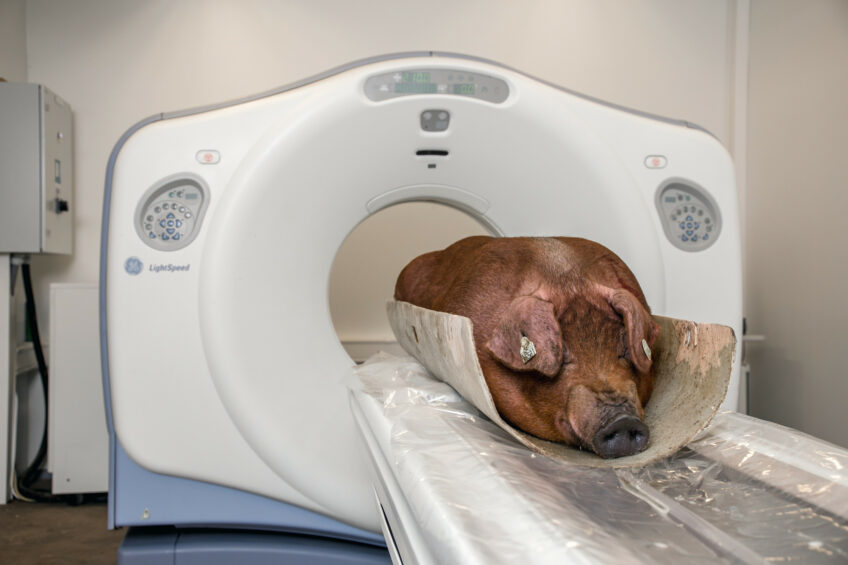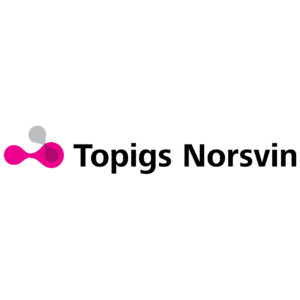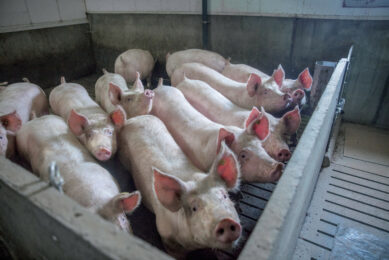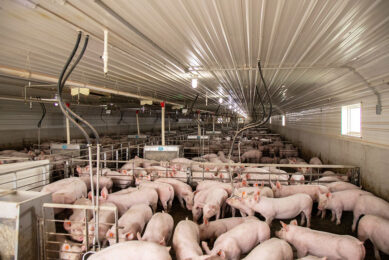Breeding for better bacon through CT scanning

Bacon is a customer favourite in many parts of the world. In many markets, it is produced from pig bellies. Recent developments in the pig sector have been putting increased pressure on pork belly quality. Genetics can contribute to improve pork quality and CT scanning technology helps in selecting the desired characteristics.
All over the world, the markets for pork bellies and bacon tend to differ and have different quality demands. In general, however, two aspects can be considered the most important: thickness and fat quality. On the one hand, a pork belly must be thick, while, on the other, it should have the proper lean-to-fat ratio, with the ideal fat quality.
USA: Thickness required
In the United States, the name “number one bellies” is given to what its market considers premium bellies. Those are characterised by a full slice of about 3.3 cm (1.3 inch) thick with minimal yield loss, well-fitted in its packaging, and giving a high-quality presentation. Consumers desire all of those aspects. Bellies that do not meet the requirements for “number one bellies” are typically not thick enough (termed “number 2 bellies” or less than 3.3 cm slice thickness). Slices from number 2 bellies are not as appetising to consumers in-store due to reduced visual appeal, which reduces purchase intent. Number 2 belies are often downgraded to budget products or bacon by-products such as bacon bits.
Europe: Lean-to-fat ratio
In Europe, on the other hand, the lean-to-fat ratio of the belly is an important quality aspect. Over the last decades, market drivers have caused pigs to become more efficient with leaner carcasses. Bellies usually have a high fat content compared to other primal cuts and market drivers have negatively impacted belly thickness.
Heavier, wider and longer
Global trends have seen carcasses becoming heavier, which in turn results in them being wider and longer. That can give rise to several processing problems. Longer carcasses can be beneficial as the bellies are also longer and can produce more high-quality centre-cut belly slices. However, in some cases, carcasses get longer but do not have heavier, thicker primal cuts, leading to less thick bellies and fewer number one slices. Carcass width and thus belly size can lead to challenges related to processing and packaging. They can be too wide for the equipment used to process the bellies into bacon, resulting in inefficiencies and unnecessary downgrades. Another potential negative aspect of heavier pigs is that the lean-to-fat ratio is negatively affected with bellies becoming too fat. So the relationship between belly width and thickness should be monitored.
Fat quality: The wrong fat
A bigger issue is the saturation level of fats in the belly. The fat saturation level influences the firmness of the belly. Bellies containing a higher level of unsaturated fat are softer and harder to process, which negatively affects processing yields. Saturation also affects consumer appeal, as firmer bacon slices may be desired.Feeding strategies and the raw materials used strongly influence the saturation level of fats in the carcass. For example, feeding a high percentage of DDGS can lead to higher levels of unsaturated fats.

Improving through genetics
Topigs Norsvin can contribute to countering the negative effects of heavier carcasses and changes in raw material feed by supporting producers with knowledge, advice and breeding goals to select pigs that have more desirable bellies. The company uses CT scanning technology to “look inside” the pig and measure belly characteristics. In that way, it is even possible to determine fat quality in live animals. That is a huge step forward from what was done in the past, because bellies are not easy to measure, especially of live animals. Today, it is possible to breed for thicker, bigger bellies without compromising the lean-to-fat ratio.
This article is based on a podcast with Matt Schulte and Grant Walling, members of the Topigs Norsvin Meat Group. Check the podcast section here.




